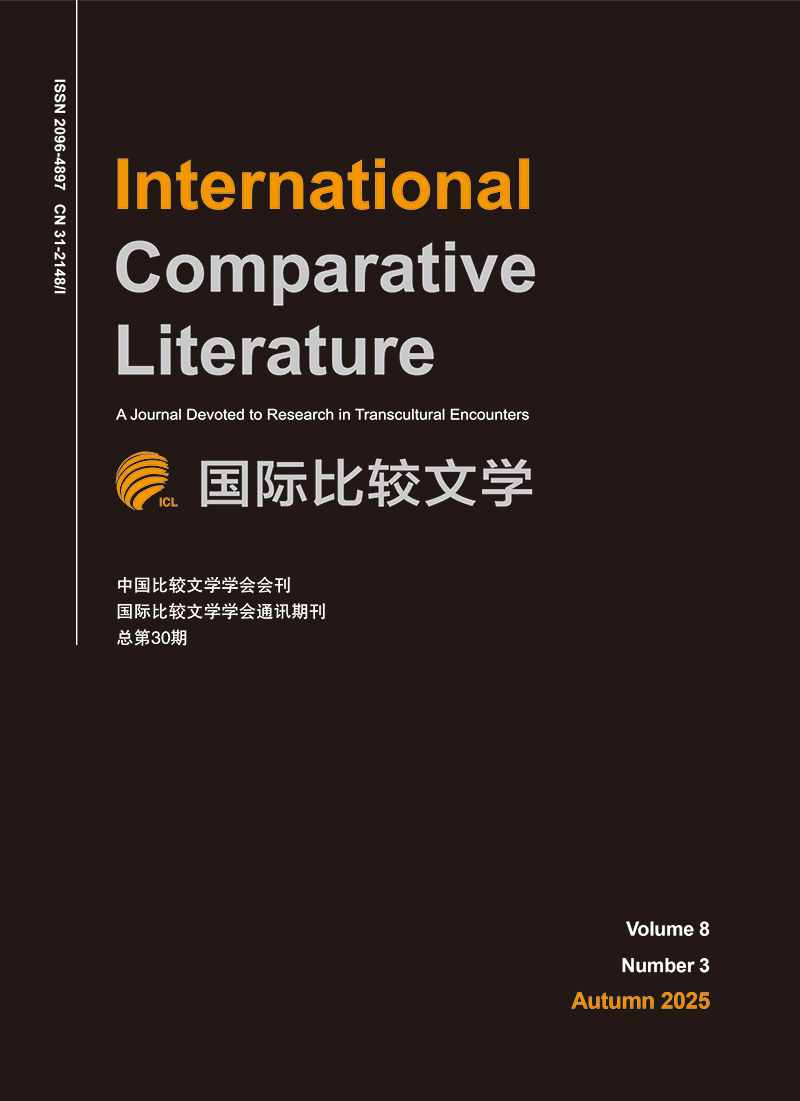|
[1]
|
Andrews,Michael Cameron. "Sincerity and Subterfuge in Three Shakespearean Sonnet Groups." Shakespeare Quarterly 33(1982):314-27.
|
|
[2]
|
Auden,W.H.Introduction to The Sonnets.Edited by William Burto.New York:Signet,1964.xvii-xxxviii.
|
|
[3]
|
Bates,Catherine.The Rhetoric of Courtship in Elizabethan Language and Literature.Cambridge:Cambridge University Press,1992.
|
|
[4]
|
Berry,Lloyd E.,ed.The English Works of Giles Fletcher,the Elder.Madison:University of Wisconsin Press,1964.
|
|
[5]
|
Booth,Stephen.An Essay on Shakespeare's Sonnets.New Haven:Yale University Press,1969.
|
|
[6]
|
Burrow,Colin. "Life and Work in Shakespeare's Poems." Proceedings of the British Academy 97(1998):15-50.
|
|
[7]
|
——,ed.The Complete Sonnets and Poems.Oxford:Oxford University Press,2002.
|
|
[8]
|
Chartier,Roger. "Laborers and Voyagers:From the Text to the Reader." Diacritics 22(1992):49-61.
|
|
[9]
|
Dubrow,Heather. "Shakespeare's Undramatic Monologues:Toward a Reading of the Sonnets." Shakespeare Quarterly 32(1981):55-68.
|
|
[10]
|
——. "‘Dressing old words new’?Re-evaluating the ‘Delian Structure’." In A Companion to Shakespeare's Sonnets,edited by Michael Schoenfeldt,90-103.Oxford:Blackwell,2007.
|
|
[11]
|
Duncan-Jones,Katherine. "Was the 1609 Shake-Speares Sonnets Really Unauthorized?" The Review of English Studies 134(1983):151-71.
|
|
[12]
|
——,ed.Shakespeare's Sonnets.Walton-on-Thames:Thomas Nelson,1997.
|
|
[13]
|
Forster,Leonard.The Icy Fire:Five Studies in European Petrarchism.Cambridge:Cambridge University Press,1969.
|
|
[14]
|
Foster,Donald W. "Master W.H.,R.I.P." PMLA 102(1987):42-54.
|
|
[15]
|
Gill,Stephen,ed.,William Wordsworth:The Major Works.Oxford:Oxford University Press,1984.
|
|
[16]
|
Go,Kenji. "Samuel Daniel's The Complaint of Rosamond and an Emblematic Reconsideration of A Lover's Complaint." Studies in Philology 104(2007):82-122.
|
|
[17]
|
Gosse,Edmund,ed.The Complete Works of Thomas Lodge.Vol.2.New York:Russell&Russell,1883.
|
|
[18]
|
Jackson,Mac Donald P.Determining the Shakespeare Canon:"Arden of Faversham" and "A Lover's Complaint." Oxford:Oxford University Press,2014.
|
|
[19]
|
Kerrigan,John,ed.The Sonnets and A Lover's Complaint.London:Penguin,1986.
|
|
[20]
|
——,ed.Motives of Woe:Shakespeare and ‘Female Complaint’:A Critical Anthology.Oxford:Clarendon,1991.
|
|
[21]
|
Klawitter,George,ed.Richard Barnfield:The Complete Poems.Selinsgrove,PA:Susquehanna University Press,1990.
|
|
[22]
|
Larsen,Kenneth J.,ed.Edmund Spenser's "Amoretti" and "Epithalamion":A Critical Edition.Tempe,AZ:MRTS,1997.
|
|
[23]
|
Lee,Sidney,ed.Elizabethan Sonnets.Vol.2.Westminster:Archibald Constable,1904.
|
|
[24]
|
——,ed.Shakespeare's Sonnets.Oxford:Clarendon,1905.
|
|
[25]
|
Magnusson,Lynne. "Thomas Thorpe's Shakespeare:‘The Only Begetter’." In The Sonnets:The State of Play.Edited by Hannah Crawforth et al..London:Bloomsbury,2017,33-54.
|
|
[26]
|
Marotti,Arthur F. "‘Love Is Not Love’:Elizabethan Sonnet Sequences and the Social Order." ELH 49(1982):396-428.
|
|
[27]
|
Martin,Philip.Shakespeare's Sonnets:Self,Love and Art.Cambridge:Cambridge University Press,1972.
|
|
[28]
|
Mc Leod,Randall. "Unemending Shakespeare's Sonnet 111." SEL 21(1981):75-96.
|
|
[29]
|
Miller,Paul W.,ed.Seven Minor Epics of the English Renaissance(1596-1624).Gainesville,Florida:Scholar,1967.
|
|
[30]
|
Neely,Carol Thomas. "The Structure of English Renaissance Sonnet Sequences." ELH 45(1978):375-85.
|
|
[31]
|
Proudfoot,Richard,et al.,eds.William Shakespeare:Complete Works.London:Bloomsbury,2021.
|
|
[32]
|
Ringler,William A.,ed.The Poems of Sir Philip Sidney.Oxford:Clarendon,1962.
|
|
[33]
|
Roche,Thomas P.Petrarch and the English Sonnet Sequences.New York:AMS,1989.
|
|
[34]
|
Roe,John,ed.The Poems.Cambridge:Cambridge University Press,1992.
|
|
[35]
|
Rollins,H.E.ed.A New Variorum Edition of Shakespeare:The Poems.Philadelphia and London:J.B.Lippincott Company,1938.
|
|
[36]
|
Schiffer,James. "‘Honey Words’:A Lover's Complaint and the Fine Art of Seduction." In Critical Essays on Shakespeare's "A Lover's Complaint":Suffering Ecstasy.Edited by Shirley Sharon-Zisser.London:Routledge,2006,137-48.
|
|
[37]
|
Skinner,Quentin.Forensic Shakespeare.Oxford:Oxford University Press,2014.
|
|
[38]
|
Smith,Katherine Jo.Ovidian Female-Voiced Complaint Poetry in Early Modern England.Ph D diss.,University of Warwick,2016.
|
|
[39]
|
Spiller,Michael R.G.The Development of the Sonnet:An Introduction.London:Routledge,1992.
|
|
[40]
|
Sprague,Arthur,ed.Poems and A Defence of Ryme.Chicago:University of Chicago Press,1930.
|
|
[41]
|
Wall,Wendy.The Imprint of Gender:Authorship and Publication in the English Renaissance.Ithaca:Cornell University Press,1993.
|
|
[42]
|
Winters,Yvor. "Poetic Styles,Old and New." In Four Poets on Poetry,edited by Don Cameron Allen,44-75.Baltimore:Johns Hopkins Press,1959.
|
|
[43]
|
Zocca,Louis R.Elizabethan Narrative Poetry.New Brunswick,N.J.:Rutgers University Press,1950.
|
|
[44]
|
(美)哈罗德·布鲁姆:《影响的焦虑》,徐文博译,北京:生活·读书·新知三联书店,1989年。[Bloom,Harold.The Anxiety of Influence:A Theory of Poetry.Translated by XU Wenbo.Beijing:SDX Joint,1989.]
|

 点击查看大图
点击查看大图



 下载:
下载:

